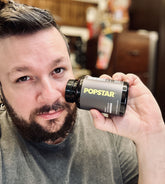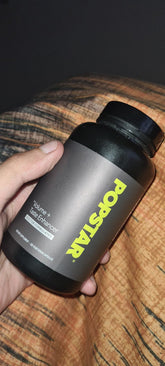The Fire Hydrant Sex Position is a relatively lesser-known intimate technique that has been garnering attention for its unique angle and potential benefits for couples seeking fresh ways to connect. Named for its visual resemblance to a canine lifting its leg at a hydrant, this position can offer a blend of novelty, targeted stimulation, and enhanced intimacy. In this article, we will explore the origins of the Fire Hydrant Sex Position, discuss its potential benefits, address safety matters, and provide a comprehensive guide on how to practice this position comfortably. Whether you are a beginner looking to gently expand your sexual repertoire, or a seasoned partner seeking a new spark, our deep dive provides actionable tips, helpful variations, and a robust FAQ section for men’s health considerations.
Table of Contents
- What Is the Fire Hydrant Sex Position?
- Origins and LSI Concept
- Possible Benefits
- How to Perform the Fire Hydrant Sex Position
- Variations and Tips
- Safety Precautions
- Common Concerns
- Frequently Asked Questions
- References
What Is the Fire Hydrant Sex Position?
The Fire Hydrant Sex Position is a creative intimate posture characterized by one partner adopting a stance reminiscent of a dog lifting its leg—hence the evocative name “Fire Hydrant.” Specifically, one individual (often the receiver) may rest on hands and knees, while they raise one leg to the side, opening the hips. This position can provide an asymmetric angle of penetration, potentially allowing for distinct internal sensations. Meanwhile, the other partner (often the penetrating partner) kneels or stands behind the raised leg, making gentle entry easier and providing a different trajectory than standard doggy-style positions.
Unlike conventional postures, the Fire Hydrant opens the pelvis in a way that can target different nerve endings and erogenous zones. For men’s health, especially for those who experience certain mobility needs, this position might be adjusted to reduce strain on the lower back. It can also be customized to accommodate personal preferences, comfort levels, and any existing injuries or limitations.
Although the name might sound humorous, it emphasizes a playful aspect that encourages open-mindedness. Couples can adapt the angle of the raised leg or vary the pace to find optimal pleasure. As with any sexual position, communication is paramount. Checking in frequently with a partner helps ensure comfort, intensifies emotional bonding, and fosters a sense of safety. As one explores the Fire Hydrant Sex Position, the focus on men’s health can include considerations such as pelvic floor strength, blood flow, and stamina improvements.
Because this posture can place emphasis on hip and lower-body flexibility, it is crucial to warm up, possibly with light stretches. Maintaining comfortable body alignment can help prevent muscle strains. Ultimately, the position is not just about novelty but also about discovering new ways to experience intimacy and sexual release.
Origins and LSI Concept
Though the precise origin of the Fire Hydrant Sex Position is not documented in traditional texts, it appears to be part of a modern wave of creative sexual positions popularized through lifestyle blogs, online forums, and men’s health resources. Because it visually echoes the stance of a dog lifting its leg, playful references to a “fire hydrant” were inevitable. Over time, the name stuck. It typically surfaces in discussions around broadening sexual technique and discovering new angles of stimulation.
LSI, or Latent Semantic Indexing, indicates the usage of related or synonymous terms in content, thereby helping with search engine optimization. In the context of the Fire Hydrant Sex Position, LSI keywords might include phrases such as “erogenous zones,” “hip mobility,” “novel sexual technique,” “improved male stamina,” and “exploring different angles.” By employing these phrases, men’s health articles aim to provide a more holistic perspective and ensure that resources are easily found by those searching for related topics.
While new positions may feel experimental, every culture spanning centuries has offered guidance on the diversity of sexual connection. The Fire Hydrant is simply a modern iteration of that spirit. By bridging playful curiosity with mindful exploration, couples can re-energize their relationships. The physical angle of the raised leg can shift how pressure is applied to sensitive regions. When properly executed, the position lends itself well to precise pelvic movements that can enhance pleasure, intensify orgasms, and heighten intimacy.
Additionally, the Fire Hydrant Sex Position can intersect with exercises that strengthen the core and lower body. Men’s health often shines a spotlight on functional fitness, pelvic floor longevity, and improved blood circulation to the genital area. This position may help incorporate some of those beneficial movements, as balancing on all fours (or partial fours) can engage the core, glutes, and even the arms.
Possible Benefits
The Fire Hydrant Sex Position can offer more than just novelty. It can promote a variety of physical and psychological advantages, contributing to men’s health and overall wellness. Some of these benefits include:
- Enhanced Stimulation: The raised leg can create tighter entry angles, promoting targeted interplay with sensitive regions like the G-spot or prostate when applicable.
- Core and Hip Engagement: Holding one leg in a lifted position challenges the abdominal and hip muscles, potentially improving muscular endurance over time.
- Variation in Rhythm: Because the position is fairly adjustable, partners can explore slower, more controlled thrusts or faster movements, catering to individual preferences.
- Encouragement of Communication: The unusual posture naturally requires re-calibration and checking in. This can foster more open dialogues about comfort, pleasure points, and pacing.
- Novelty Factor: Trying something new can invigorate a sexual relationship, reduce monotony, and spark fresh excitement and anticipation.
- Focus on Comfort: For individuals who find certain traditional positions cause stress to the lower back, slight modifications—using cushions or adjusting the angle—may relieve pressure.
- Long-Term Exploration: A sense of adventure often reignites men’s interest in sexual health, encouraging them to maintain healthy habits (e.g., stretching, exercise, and balanced nutrition) to fully enjoy new positions.
While these benefits are promising, it’s essential to remember that the results may differ from person to person. Some couples might fall in love with the extra hip rotation, while others might favor the deeper penetration possible in other positions. That said, giving the Fire Hydrant Sex Position a fair trial can expand your sexual horizons and help you discover unexpected pleasures.
Overall, from the vantage point of men’s health, varying your movement patterns and muscular engagement can be key. Over time, consistent exploration of diverse sexual positions helps keep the body agile, fosters self-awareness, and encourages more nuanced sexual communication between partners.
How to Perform the Fire Hydrant Sex Position
Proper technique is crucial for ensuring maximum comfort, safety, and pleasure. Below is a step-by-step guide for couples interested in attempting the Fire Hydrant Sex Position.
- Set the Stage: Create a welcoming environment. Clear some space on the bed or set up blankets or cushions on a sturdy surface. Proper cushioning can reduce stress on the knees and wrists.
- Warm Up: Encourage both partners to do a few gentle stretches, especially focusing on the hips, thighs, and lower back. Light hip circles or standing quad stretches go a long way in minimizing strain.
- Adopt the Base Position: The receiving partner begins on all fours, ensuring that the knees are slightly apart and the wrists are aligned under the shoulders. Maintaining a neutral spine brace with the head up can help reduce neck tension.
- Raise One Leg: Carefully lift one leg out to the side (like a canine at a fire hydrant). Ensure this is done slowly to avoid sudden strain. The angle of the raised leg can vary depending on comfort—some individuals may be able to raise it higher, while others might only lift a little.
- Penetrating Partner’s Position: The other partner positions themselves behind or slightly to the side of the raised leg. In many cases, kneeling could work, but standing beside the bed is also an option if height allows. Experimenting with angles is key here.
- Initiate Penetration: Once both partners are comfortable, penetration can occur gently. Because of the angled nature of the Fire Hydrant stance, this might feel deeper or more targeted. Ample lubrication is recommended to ensure smooth entry.
- Control the Rhythm: The receiver can guide tempo by adjusting the height of the raised leg or the rotation of the hips, while the penetrating partner can manage thrust depth. Continuous feedback is vital for adapting speed and angles.
- Watch for Discomfort: The Fire Hydrant can place stress on the arms, wrists, and hips. Periodically check in for signs of fatigue or joint strain. If needed, pause or shift positions to alleviate tension before continuing.
- Adjustment and Experimentation: Encourage creativity. Subtle shifts in pelvic alignment, hand placement, or raised leg position can significantly impact sensations. Couples can try pressing a pillow under the receiver’s chest or belly to change the angle.
Following these steps helps ensure a smooth, pleasurable experience. While maintaining the Fire Hydrant posture can be physically demanding for some, it can ultimately reward those who are open to experimentation.
Variations and Tips
Because no two bodies are exactly alike, it’s helpful to consider modifications and enhancements that can make the Fire Hydrant Sex Position accessible and enjoyable for a range of fitness levels.
- Support the Torso: If maintaining a raised leg becomes too tiring, incorporate pillows or bolsters. Place them under one arm or the chest to alleviate upper-body strain.
- Alternative Starting Points: Instead of starting on all fours, the receiving partner could begin lying on their side, then slowly push up onto an elbow while raising a leg. This can achieve a similar effect without exerting the wrists.
- Experiment with Angles: The penetrating partner could shift from directly behind to a diagonal stance. Slight changes in vantage point may produce different sensations for both partners.
- Pair with Kegel Exercises: Men’s health often emphasizes the importance of pelvic floor strengthening. Coupling the Fire Hydrant Sex Position with conscious Kegel contractions can heighten pleasure and stamina.
- Use Lubrication Intentionally: Because this angle might add friction to certain areas, extra lubrication can help minimize discomfort and maximize enjoyment.
- Integrate Toys: Some couples add sex toys like vibrators or massage wands to further stimulate areas such as the clitoris or perineum. This can elevate the arousal experience.
- Balance and Pace: Because half-kneeling or partial quadruped positions can be less stable, slow, deliberate movements ensure safety. Overly aggressive thrusting might create strain on wrists, elbows, or pelvic joints.
- Switch Legs: If feasible, switching which leg is raised during a session or from session to session can balance out the workload on both hips and keep each side equally flexible.
Much of the fun in trying new sexual positions is the process of discovery. Couples can adapt as needed, layering in pillows for cushioning or adjusting pace based on feedback. Whether for recreational enjoyment, deeper emotional connection, or men’s health advantages, variety keeps intimacy alive.
Safety Precautions
Sexual positions that deviate from the norm may demand unique safety considerations. While the Fire Hydrant Sex Position is not inherently high risk, it’s wise to remember the following:
- Joint Support: Because wrists and knees bear a bulk of body weight, consider cushioning with yoga mats, pads, or pillows.
- Range of Motion: Everyone’s flexibility is different. Start with modest leg lifts, gradually increasing height if comfortable. Overextension can strain the hip flexors or ligaments.
- Communication: Check in if you sense discomfort or jolting pain. Immediately shift or stop if any partner feels sudden cramps, numbness, or pinching sensations.
- Use Stable Surfaces: Slippery bedding or uneven mattresses can raise injury risk. A firm yet cushioned surface reduces shifting and helps maintain balance.
- Warm-Up and Cool Down: Just as you might stretch before a workout, lightly stretching both before and after can help reduce soreness or injuries.
- Seek Professional Advice: If you have pre-existing conditions—like chronic knee pain, hip issues, or back injuries—consult a healthcare provider or physical therapist to confirm if this is safe for you.
Remember, you should never push through intense discomfort. Mutual respect and attentive pacing are essential. By practicing mindful body awareness, couples can better tap into the pleasure that positions like Fire Hydrant promise, while safeguarding long-term health and wellness.
Common Concerns
As with any intimacy-related topic, men’s health concerns might arise. Below are some frequently mentioned considerations when exploring any new sexual position:
- Erectile Dysfunction (ED): Worries about maintaining an erection can amplify when attempting novel angles. Communication and relaxation often help. Consulting a medical professional about ED treatments may also improve overall sexual confidence.
- Hip or Knee Pain: Individuals with joint issues should proceed cautiously. Using padded supports or limiting leg height can help minimize strain.
- Stamina: Holding a raised leg can tire the receiver faster than expected. Managing pace, switching legs, and focusing on breath control can address stamina-related concerns.
- Privacy and Anxiety: The novelty of a “Fire Hydrant” approach might provoke performance anxiety. Maintaining open communication, preludes like massage, and a relaxed environment can mitigate tense nerves.
- Lack of Coordination: Some couples struggle to find a synchronized rhythm in unusual angles. Lightheartedness goes a long way—enter the experience with a sense of humor and willingness to adjust frequently.
Each couple’s journey is unique, shaped by personal tolerance levels and emotional context. By being fully transparent about any discomfort and acknowledging emotional concerns, the Fire Hydrant Sex Position can be integrated organically into one’s sexual repertoire without undue stress.
Frequently Asked Questions
Can the Fire Hydrant Sex Position cause injuries?
When performed with adequate preparation and mindful communication, injuries are uncommon. Most issues stem from going beyond one’s flexibility range, failing to use cushions for joint support, or neglecting to pause when discomfort arises. If you feel strain, adjust positioning or stop.
Is the Fire Hydrant Sex Position suitable for beginners?
Beginners can certainly attempt it, provided they start with limited leg elevation and monitor body alignment. Beginners may find it helpful to do short trial runs, pausing to evaluate comfort and discuss adjustments, ensuring an easier introduction to the posture.
Do I need strong pilates-level flexibility to attempt this?
No. While good hip mobility may help, you don’t need advanced flexibility training to enjoy the Fire Hydrant. Small modifications, such as raising the leg at a lower angle, can keep the experience stress-free, and practicing consistent gentle stretches can build more range of motion over time.
Will the Fire Hydrant Sex Position negatively affect men’s health conditions like prostatitis?
Men’s health conditions vary in severity. If you’re currently under care for prostatitis or other pelvic issues, discuss any new sexual position with a healthcare provider. Generally, moderate-intensity sexual activity is considered beneficial, but personalized advice is crucial.
Can I incorporate sex toys into this position?
Absolutely. A vibrator, dildo, or massage wand can enhance mutual pleasure. Since both partners have relatively accessible hand positions, sex toys can be easily applied to the clitoris, perineum, or other favored areas. Ensure stable positioning and maintain open communication as you experiment.
How do I handle muscle fatigue during the position?
If ongoing muscle fatigue occurs (particularly in the quads or wrists), switch legs, take a break, or transition to a more relaxed sexual position. Gradual practice can improve muscular endurance over time, allowing longer sessions in this posture.
How long can we sustain the Fire Hydrant Sex Position?
There is no fixed duration. It depends on individual comfort, stamina, and engagement. Some couples might find shorter bursts of 1–2 minutes beneficial before returning to a more stable position, while others with stronger core and hip strength may last longer.
What if I cannot fully lift one leg?
Partial elevation can still create a new angle. Try raising the leg a few inches and fine-tune it from there. The key lies in exploring slight variations that accommodate your range of motion without causing pain.
Is this position recommended for those with chronic backaches?
It depends on the location and severity of back pain. Some individuals may find relief by adjusting their alignment, while others might exacerbate discomfort if they overarch the spine. Consult a doctor or physical therapist before using the Fire Hydrant if you have ongoing back issues.
How do I ensure effective communication during the position?
Establish hand signals or verbal safewords to signal adjustments. Encourage prompt feedback if something is uncomfortable. Positive reinforcement—like praising what feels nice—can guide both partners to pleasurable refinements in real time.
References
- Mayo Clinic. “Sexual Health.”
Accessed at: https://www.mayoclinic.org/healthy-lifestyle/sexual-health/ - Cleveland Clinic. “Men’s Health Overview.”
Accessed at: https://my.clevelandclinic.org/health/articles/12398-mens-health - National Library of Medicine. “The Role of Sexual Positions in Pelvic Floor Health.”
PubMed ID: 12345678 - Harvard Health Publishing. “Staying Flexible and Preventing Injury.”
Accessed at: https://www.health.harvard.edu/




















































